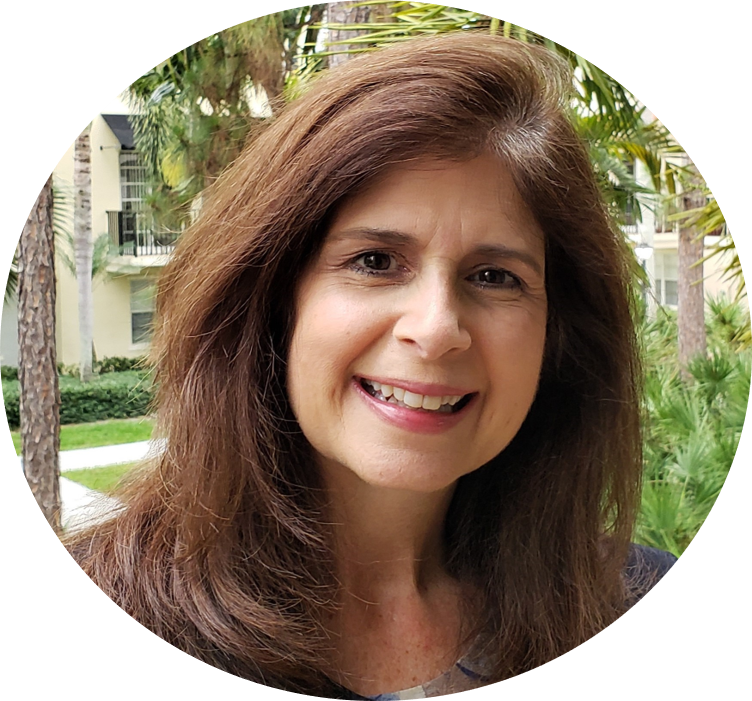The Bridge Built for Golf
The Bridge golf club’s lavish, visually striking environs in the exclusive Long Island town of Bridgehampton are a world away from West 117th Street in New York City’s historic Harlem neighborhood, site of the Bridge Golf Learning Center. Though separated by only about 85 miles (as the crow flies), The Bridge and the Bridge Learning Center occupy vastly different worlds.
The Bridge, comprising about 300 acres of beauty with views of Sag Harbor, Noyack and Peconic Bays, is located in an upscale part of Long Island where any type of crime is a rarity. The club’s current initiation fees exceed $1 million, while annual dues are about $30,000. The Bridge Learning Center occupies a small space on the ground floor of a high-rise condominium in a part of Harlem that now features (to the chagrin of many) restored brownstones, coffeehouses, and bistros, but remains part of an urban landscape that stands in stark contrast to the lush greenery, manicured rolling hills and seascapes of Bridgehampton.
What ties these two facilities together, aside from golf? It’s Robert M. Rubin, who, along with Farrell Evans, started the Bridge Golf Foundation in 2015.
A Fortuitous Meeting

Rubin (right) and Evans (left) at The Bridge Golf Foundation 2017 charity event at The Bridge Golf Club. Photography by Margarita Corporan
Separated by a generation, and having traveled very different paths to discover their love for the game, the two men met while playing golf together with a mutual friend in the fall of 2014.
Evans, 43, grew up in the rural Georgia town of Forsythe, where he picked up the game at a public golf course that his uncle, J. P. Evans, helped desegregate about 15 years earlier. Evans interned at the PGA TOUR while he was on the Florida A&M golf team and, following college, pursued a career in golf journalism. After starting with the Golf Digest Companies, he spent nearly a decade at Sports lllustrated (2002-2012) and then was with ESPN from 2012-15 before co-founding The Bridge Golf Foundation in 2015.
Rubin, now 64, came to golf later in life, as do many golfers that grow up in blue-collar families with no involvement in the sport. The son of an appliance repairman, he grew up in Monmouth County, New Jersey. After college, he landed on Wall Street – accumulating vast wealth as a commodities and currency trader – and discovered that golf and business go hand-in-hand. His newfound passion for the game culminated with his 2002 founding of The Bridge, where he’s the club’s principal owner.
The 2014 meeting proved fortuitous, as Rubin and Evans found common ground. Beyond their mutual love for the sport, they discovered that they shared similar views about the inequity of opportunities for young black men in America, and in the game of golf specifically, where segregation extended even to professional golf until pioneering African-American professionals such as Ted Rhodes and Charlie Sifford began to break down barriers in the 1960s.
As they played and talked during that round in Westchester County, New York, Evans – writing about golf for ESPN at the time – asked Rubin if he’d ever thought about doing something golf-related that could bring inner-city kids into the game, while also providing education and structure to their lives. Rubin expressed interest and, within a week, Evans presented him with the initial concept. The nonprofit Bridge Golf Foundation was established in January 2015.
Bridge Golf Foundation / Bridge Golf Learning Center

Students at the Bridge Golf Learning Center in Harlem. Photography by Margarita Corporan
The foundation’s mission is to “use the game of golf to improve life outcomes for young men of color”, while also providing mentoring, character education, and learning in traditional school subjects.
“We’re really focused on the most in-danger population, the neediest cases. We believe that golf can be a powerful tool to help save these black and brown boys who have the worst statistics in every category — filling up our prisons, dying at an alarming rate to drug and gun violence,” Evans says. “The goal isn’t to create the next Tiger Woods or Harold Varner – it is to create new generations of young people who will play this game for the rest of their lives, be good citizens and give back. And the game will be richer for it”.
Programming began in September 2015 with 7th and 8th grade students from Eagle Academy for Young Men of Harlem. Students were introduced to golf by swinging plastic clubs at the local YMCA. The foundation chose to partner with Eagle Academy because of an alignment of interests, as each seeks to reach young men of color through education, mentoring and community. The Bridge Golf Learning Center, located just below Lenox Avenue / Malcolm X Boulevard, opened in May 2016.
Prior to opening, Evans brought the National Golf Foundation in to assist with business planning elements and financial projections.
As the NGF’s director of consulting services, I worked with Evans in late 2015 in advance of the learning center’s opening and was honored to play a small role in its initial business plan. Not only does it have a noble cause and mission outside golf, but the proliferation of programs like this across the U.S. may play a key role in growing the game beyond its core base of participants.
The students at the center are 7th through 11th graders, the older of which play on the Eagle Academy golf team that competes in New York’s Public School Athletic League. All students are required to go to the learning center at least four days a week after school and the organization also offers a seven-week summer program. A key component of the educational curriculum is STEM (Science, Technology, Engineering and Mathematics) lessons, many of which revolve around the statistics and physics of golf.

The Bridge, an exclusive private course on Long Island, has an initiation fee in excess of $1 million.
Rubin and the foundation host the students at the Bridge several times each year, including an instructional clinic where they delve into the nitty gritty of club operations and maintenance. They also get to play the golf course, enjoy great food and take in stunning views not found in the city.
Another opportunity to spend time at their cousin facility out east is the Youth Works program, which teaches job skills – club fitting, customer service, using a point-of-sale system – and includes a week in Bridgehampton working on the course and in the shop, learning all the different facets of the game and business of golf.
Commercial Side

Students from The Bridge Golf Learning Center at The Bridge. Photography by Margarita Corporan
When the facility isn’t being utilized to teach kids in the after-school program that runs between 3 pm and 6 pm, it is open to the public for simulator use, golf lessons and club fitting, providing revenues that help supplement donations (mostly from Rubin) to meet the annual $800,000 budget. The for-profit side of the learning center has become a staple of the Harlem community.
With a community-focused approach, affordability and premier technology that includes three Trackman simulators, a putting trainer (SAM Puttlab) and wearable biofeedback devices for swing analysis (K-Vest), the learning center has become one of the most sought-after indoor golf facilities in Manhattan. Its golf professionals stay busy year-round giving lessons to players from all walks of life, while players and groups regularly utilize the simulators for practice or play on weekends and on afternoons before the after-school program.
“The learning center helps us pay our bills,” says Evans, “But more importantly it helps drive interest in the game in the community and brings awareness to our mission and programming.”
Looking to the Future

The Bridge Golf Foundation 2017 charity event at The Bridge on Long Island. Photography by Margarita Corporan
Bridge Golf Foundation and the Bridge Golf Learning Center have accomplished much during their brief existence. There are 30 young men in the learning center’s after-school program and Evans said they’ve worked with more than 100 others through The Eagle Academy. Outside of those efforts, they’ve introduced over 200 new golfers to the game since opening just over two years ago. Another early success has been the partnership with Betsy King’s organization Golf for Africa, which the World Golf Hall of Famer has used to galvanize the entire golf community around clean water projects in Africa.
Challenges remain, as non-profits face a difficult landscape in which to raise money and Bridge Golf must also broaden its donor base. Still, the foundation has lofty goals, driven by a fundamental belief that golf can change outcomes for the kids involved in its programs.
“We’ll have our first full graduating class in spring 2020 and we are highly encouraged about what the outcomes will be for these kids. That will be the litmus test of our model,” says Evans. “We’re trying to build a network for these young men, a support system they can rely on from the time we engage them in middle school through high school, college, internships, and careers. Plus, they’re learning a game they’ll enjoy for the rest of their lives, with the benefits and access that go with that.”
Evans, for his part, hopes The Bridge that connects Harlem and Long Island is just the first step.
“My vision is that the foundation can help thousands of kids,” he says. “I envision PGA professional-staffed indoor facilities like ours in every urban area in America.”
Short Game.
"*" indicates required fields
How can we help?
NGF Membership Concierge

"Moe"
Learn From NGF Members
 Ship Sticks Secrets to a Hassle-Free Buddies Golf Trip
Ship Sticks Secrets to a Hassle-Free Buddies Golf Trip
Whether you’re the head planner of your upcoming buddies golf trip or simply along for the ride, we’ve gathered a few easy ways to keep everyone in your group happy.
Read More... Golf Course Turf, Soil and Water Quality Diagnostic Testing
Golf Course Turf, Soil and Water Quality Diagnostic Testing
As humans, we see our primary care physician on a regular basis to proactively evaluate our vital signs. Likewise, a superintendent should perform frequent diagnostic testing on their golf course.
Read More... Unlocking Distance: Launch Conditions and Angle of Attack
Unlocking Distance: Launch Conditions and Angle of Attack
We’ve long known that higher launch and lower spin is a powerful combination for generating consistently long and straight tee shots. A key factor in optimizing launch conditions, one often overlooked, is ...
Read More...


